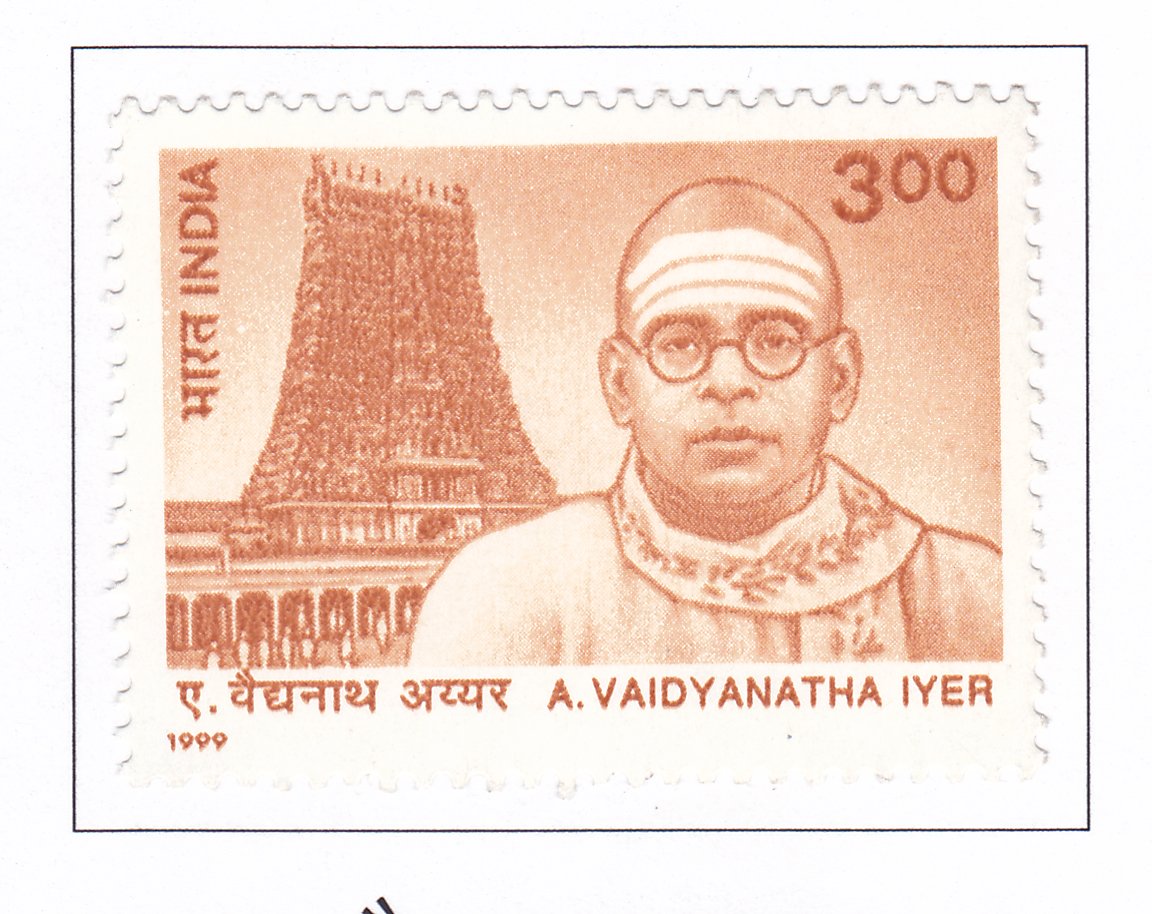Freedom Fighters & Social Reformers – A. Vaidyanatha Iyer and Temple Tower

Technical Data
| Stamp Set | India's Struggle for Freedom |
|---|---|
| Date of Issue | December 9, 1999 |
| Denomination | Rs. 3 |
| Quantity | 700,000 |
| Perforation | comb 13½ x 13¼ |
| Printer | Security Printing Press, Nashik |
| Watermark | No Watermark |
| Colors | Blackish red orange |
| Catalog Codes |
Michel IN 1723 Stamp Number IN 1785 Yvert et Tellier IN 1490 Stanley Gibbons IN 1886 |
| Themes | Famous people | Freedom Fighters | Men | Optical Instruments | Politicians | Temples |
Table of Contents
A. Vaidyanatha Iyer and the Meenakshi Temple Tower
Overview:
A. Vaidyanatha Iyer (1890-1955) was a notable freedom fighter and social reformer deeply involved in the struggle against untouchability and the promotion of social justice in India. His most significant contribution was his bold action at the Meenakshi Temple in Madurai, which became a landmark event in the fight against caste-based discrimination.
Key Details:
- Context and Background:
- Historical Context: The Meenakshi Temple in Madurai was a prominent religious site where access was restricted for members of the depressed classes, reflecting widespread social and caste-based discrimination.
- Social Reform Movement: During the 1930s and 1940s, social reformers like A. Vaidyanatha Iyer were actively working to dismantle the rigid caste hierarchies and promote equality.
- The Landmark Event:
- Temple Entry (1939): In 1939, Vaidyanatha Iyer led a group of representatives from the depressed classes into the Meenakshi Temple, breaking the longstanding barriers that had barred them from entering. This act was a significant and symbolic challenge to the prevailing social norms of the time.
- Significance of the Temple Tower: The Meenakshi Temple is known for its towering gopurams (gateway towers), which are not just architectural marvels but also symbols of the temple’s religious and cultural dominance. The act of entering the temple was a direct confrontation with these symbols of exclusion and privilege.
- Impact and Legacy:
- Social Repercussions: The successful entry into the temple was a powerful statement against untouchability and contributed to legislative changes that allowed temple entry for Harijans and other marginalized groups. It helped to catalyze the broader movement for social reform and equality.
- Recognition: Mahatma Gandhi praised Vaidyanatha Iyer and his colleagues in his publication “Harijan,” recognizing their efforts as a significant step in the campaign against untouchability.
- Continued Influence:
- Reformist Efforts: Vaidyanatha Iyer’s efforts were instrumental in advancing the cause of social justice, and his actions at the Meenakshi Temple remain a significant chapter in the history of social reform in India.
- Commemoration: The Department of Posts issued commemorative stamps to honor Vaidyanatha Iyer and other prominent figures who played a crucial role in both the freedom struggle and post-independence nation-building efforts.
In summary, A. Vaidyanatha Iyer’s bold action at the Meenakshi Temple Tower stands as a testament to his commitment to social reform and his significant contribution to the struggle against untouchability in India. His efforts not only challenged entrenched social norms but also paved the way for greater equality and justice in Indian society.
